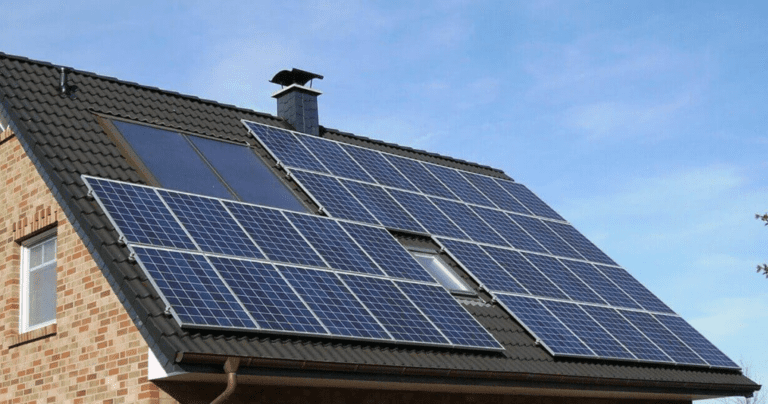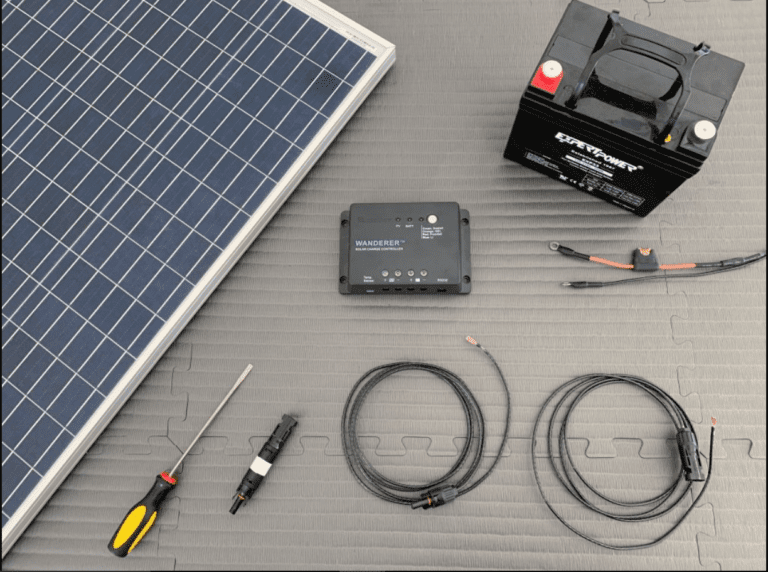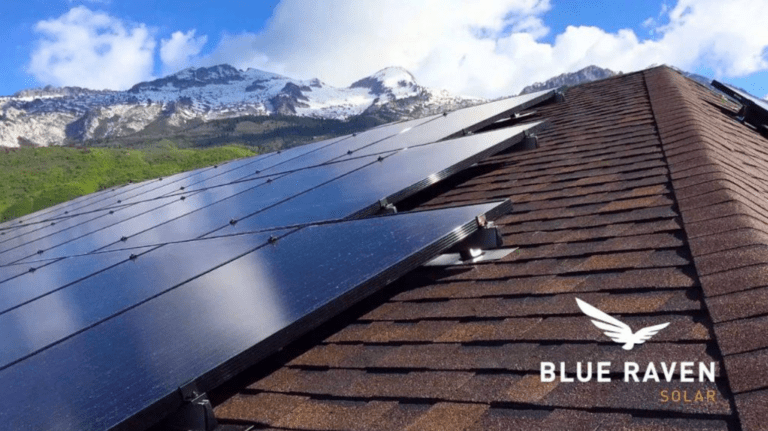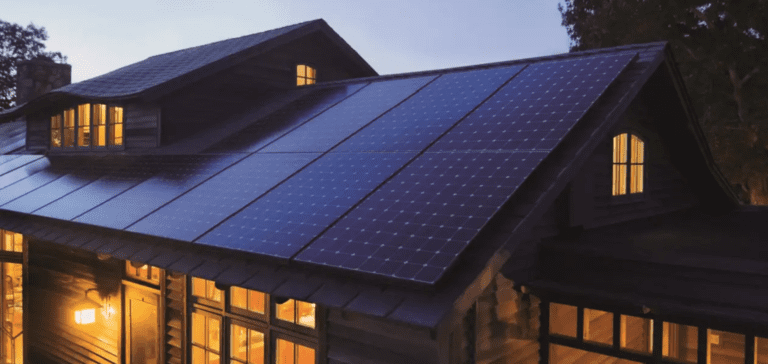Solar panel with generator review
Camping these days looks a little different than it used to. Sure, you can still head into the woods with nothing more than a backpacking tent and go completely analog, but the rise of Overlanding and glamping in recent years suggests that many people are using their Like to bring along at least some of the comforts of home. . A portable fridge, lights, camera equipment, or laptop for working remotely.
Advances in lithium battery technology in recent years mean that keeping all these gadgets charged is easier, safer, and quieter than ever. Campers no longer need noisy, smelly diesel generators to keep the lights on in their RV or their mobile office (a good thing that enforces quiet hours when you’re at a campsite). Solar generators, or portable power stations as they are often called, have come down in both price and weight since they were introduced to the market several years ago, all while increasing their charging capacity. has happened
If you’re unfamiliar with them, imagine a larger version of the power bank you already carry around to charge your phone on the go, except they usually have built-in inverters and There are standard 120-volt outlets so you can easily charge and run the computer. Plug in a CPAP, an electric cooler, or a portable washing machine even if the power goes out or you’re at a dispersed campsite with no amenities.
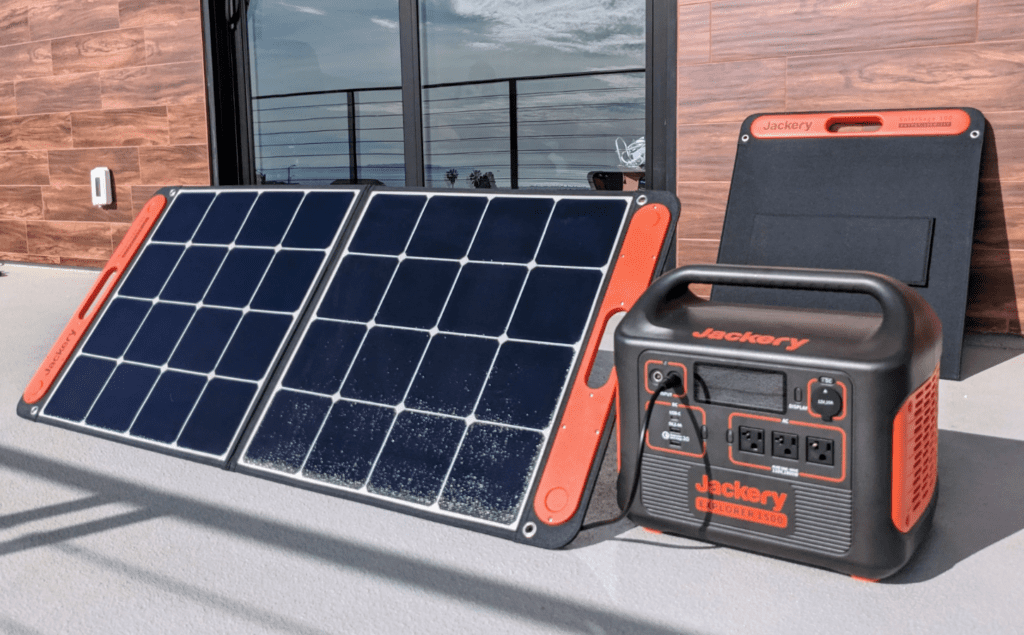
Best Solar Powered Generators
- Excellent overall
- Explorer 1000 Portable Power Station
Jakiri
- The greatest potential
- Bluti EB 240 Portable Power Station
- The most versatile
- Yeti 1500X
- Goal zero
- Perfect for powering multiple devices at once
- Delta Portable Power Station
ECOFLOW
- Perfect for weekend camping trips
- Yeti 500X
- Goal zero
Experts: Bryan Rogala and Maggie Slepian are longtime outdoorsmen with extensive experience reviewing camping, overlanding and other outdoor equipment. An overlanding enthusiast, Brian has spent countless nights camping off the grid in his truck bed, rooftop tents, travel trailers, and just about every type of tent imaginable. He has installed a solar charging system in his off-road teardrop trailer and tested various portable power stations for the outdoors. Maggie has a penchant for long car camping trips in remote areas, and has been using battery packs and solar-powered generators since she first installed a topper and a piece of memory foam on the back of her truck. . She often works from the road, so her primary charging needs are usually small personal devices like phones, laptops and headlamps. Accordingly, its go-to portable power solutions are generally mid-range in size and capacity, as they don’t require a ton of charging on the road (no fridge for that matter!) yet they recharge. Don’t want to worry about it constantly. . power bank.
- What to consider
- Your electricity needs
Before you start comparing portable power stations, you first need to figure out what power you want when you’re off the grid or during a power outage. Recharging your phone and camera a couple of times requires less energy than running appliances or powering a camper. If you like numbers, make a list of everything you want to use and try to estimate the power draw of each item. Or, just check the power station manufacturer’s website—companies usually estimate how many times you’ll be able to charge various devices and list that figure in the specs section.
Ability
The most important thing when looking for a solar powered generator is its capacity. You’ll pay more for higher capacity, but in general you’ll want to consider generators with a minimum capacity of around 40 amp-hours, or 500 watt-hours, which is more than enough for most people for a weekend of camping. There is enough juice. If you’re looking for a solar powered generator to power a camper or serve as a backup to your home during a blackout, we recommend at least 100 amp-hours. Find one with capacity and connect it to 200 watts of solar power. . As with any solar panel generator, it’s best to buy one with more capacity than you think, and a bigger solar panel so you can charge it up faster. Solar panels are not usually included with generators, so be sure to budget for this additional expense.
More Power on Demand: Best Home Generators
• Best Portable Power Stations
• Best Standby Generators
• Best Battery Packs
• Best Solar Phone Chargers
Weight and size
Lithium-ion batteries weigh less and are smaller than traditional deep cycle batteries, so most solar powered generators are light and quite portable. That said, most still weigh upwards of 10 pounds, and if you need a lot of capacity, they get heavy quickly. If you have a small vehicle or camper and are tight on space or you need a really heavy generator
Winds come and the power goes out—bet you have a generator. You’re camping and want to charge your lantern, phone, and other devices—a generator will definitely come in handy. Or maybe you’re living your way across the country and need to work on the go and keep your conversions electric—another solid case for a solar-powered generator. After all, few things are as useful in today’s technology-driven world as a source of reliable, renewable power. The best solar generators can reliably and sustainably meet a variety of energy needs, and we’re here to help you find the right one for you.
Best Overall: JCry Explorer 2000 Pro
Best for Camping: Goal Zero Yeti 1000 Cover
Perfect for off-grid living: the Bluti AC200 Max
Best for homes: EcoFlow Delta Pro
Best Portable: Anker 545
Best Budget: JCry Explorer 300
How We Picked the Best Solar Generators
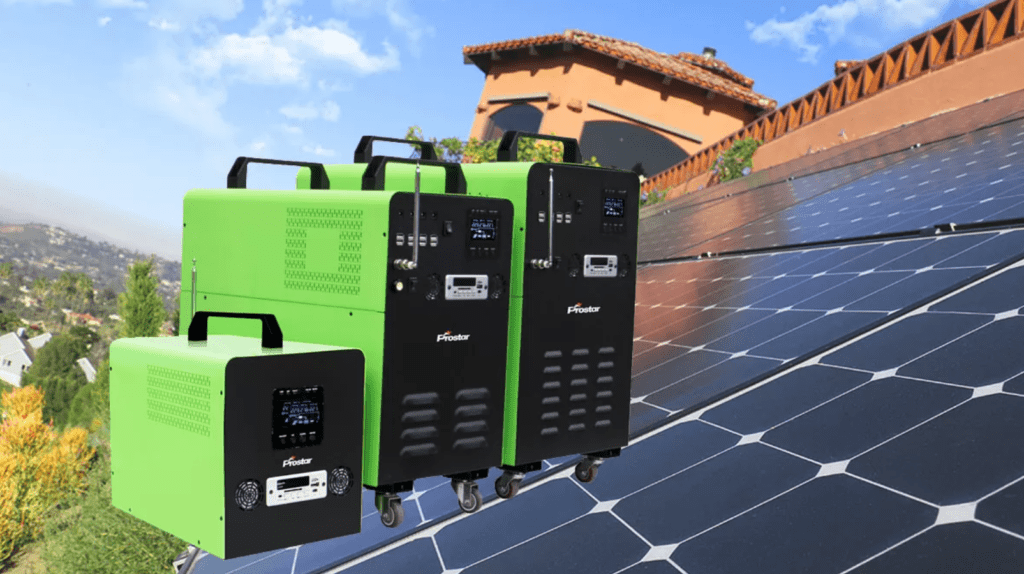
As an avid outdoorsman, I’ve had the opportunity to test an extremely wide range of outdoor gear, including mobile and off-grid electrification devices such as solar-powered generators. These became especially important when the pandemic forced my travels to be domestic rather than international, forcing me to develop a van for long-term road trips.
To bring my work along for the ride, I needed a constant power source to charge my laptop, a portable fridge, lighting, and numerous devices and tools. As a result, I’ve tried all the leading portable power stations (and there are plenty that don’t make the cut) so I know exactly what separates the best from the blah. I’ve written all about it (and other outdoor tech) in publications including The Daily Beast, Thrillst, The Manual, and more. There were cases when my own opinion resulted in a tie and I looked at actual customer reviews to find out which solar generators provided the most satisfaction to the majority of customers.
What to consider before buying a solar generator?
Over the past few years, solar generators have exploded onto the market. Now there are dozens of different brands that look more or less the same at a glance. The reality is that there are only a few standouts among the sea of knockoffs. Here’s what to look for to make sure you’re getting the best one.
How much power can it store?
Portable solar generators come in a very wide range of sizes, but the size of a generator does not automatically make it capable of storing a lot of power. In fact, most are disappointingly limited and unable to store more juice than a portable charger.
To accurately check a generator’s storage, you need to look at its capacity, which is measured in watt-hours (Wh). One watt-hour is equal to 1 watt flowing during one hour. The best solar generators offer a capacity of several hundred and in some cases several thousand-watt hours. However, this does not mean that it will provide power for several hundred or several thousand hours. Any generator will ultimately run for a different amount of time, depending on what is plugged into it.
It’s easy to estimate how long a generator will last when you use it to power something. For example, if you power a 100-watt bulb using a power station with a 500-watt-hour capacity, it will stay lit for 5 hours continuously. Add a portable fridge that requires 50 watts per hour, your phone that uses 18, a mini fan that uses three… you get the picture. The more capacity, the better.
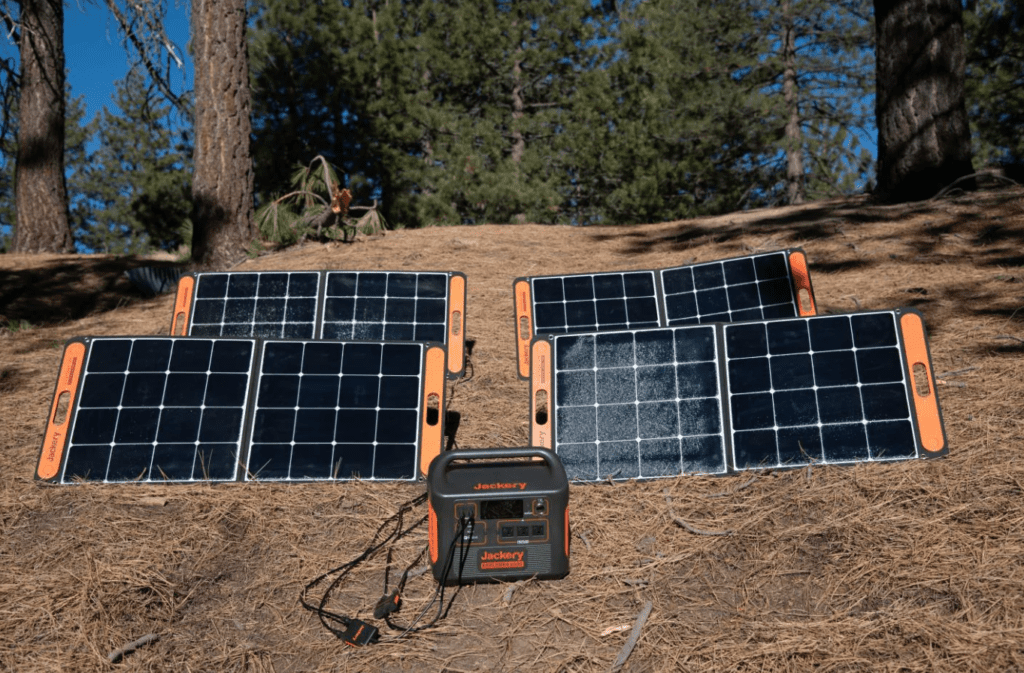
Charging capacity
No solar generator will charge forever, so you want one that can charge quickly and easily. This is where we put the “renewable” in “renewable energy.”
All of the power stations in this roundup can be charged by hooking up to solar panels (hence the name “solar generator”), but you can charge from other sources like wall outlets and your car’s 12- Also want to find the ability. Volt plug. This ensures you can charge through your dash socket whenever you’re off-grid in the sun, plugged in while prepping at home, or on the go.
You also need to keep an eye on the model’s charging input capacity, which is measured in watts (W). For example a solar generator with a maximum input of 100W can draw up to 100 watts of continuous flow, which is the minimum you would reasonably want to look for. Most of the generators below have an input capacity of at least a few hundred watts when charging with solar power, so a few 50 to 200 watt solar panels will max them out.
Output capacity
Solar generators need to keep power flowing in and out. The best solar generators are capable of charging all your desired devices at once through any plug.
Best portable: Anker 545
Best Solar Generators
Anker
Buy it used or refurbished: eBay
Why it makes the cut: If you’re looking for highly portable power, the Anker 545 delivers.
Specs
- Storage capacity: 778Wh
- Input capacity: 240W
- Output capacity: 770W
- Dimensions: 11.81 x 8.03 x 7.28 inches
- Weight: 18.2 lbs
Pros
- Lightweight and compact
- Plenty of capacity
- Built-in lights
Cons
- Slower input capacity
- When portability is a priority, the Anker 545 not only offers the compact size and reduced weight that you’re looking for, but it packs fairly substantial power to boot. Roughly the size of a shoebox and lighter than a case of beer, it’s easy to pack along with camping gear and move around without too much effort.
To get something so light, though, you do have to compromise on power. The Anker 545 has a capacity of 778Wh and an output capacity of 770W, which is plenty of power for keeping your devices charged. Specifically, that should provide about 55 phone charges, 10 for a laptop, or 38 for a camera. Unfortunately, the outlets only output at up to 500W, though, so it cannot power more demanding devices like hair dryers or electric stoves.
That said, the Anker 545 has some bells and whistles, including an integrated flashlight and ambient light. All told, it’s a solid option if you need a generator that’s highly mobile.
Buy it used or refurbished: Amazon
Why it made the cut: With its reasonable capacity, compact size, and solid build quality at a low price, the Jackery Explorer 300 is a great budget pick.
Specs
- Storage capacity: 293Wh
- Input capacity: 90W
- Output capacity: 300W (500W surge)
- Dimensions: 9.1 x 5.2 x 7.8 in
- Weight: 7.1 lbs
Pros
- Affordable
- Durable
- Portable
- Reasonable capacity
Cons
- No flashlight
- Slower input capacity
Though it isn’t quite as impressive as our top pick for best solar generator, Jackery’s smaller Explorer 300 solar generator is super compact and lightweight with a decent power capacity for its price. Less a mobile power station than an upscale power bank, the Jackery Explorer 300 provides plenty of portable recharges for your devices when you’re camping, on a job site, driving, or just need some power and don’t have convenient access to an outlet. Its modest 293Wh capacity isn’t huge, but it’s enough to provide 31 phone charges, 15 for a camera, 6 for the average drone, 2.5 for a laptop, or a few hours of operation for a minifridge or TV. A built-in flashlight would have upped its camping game somewhat, but at $300, this highly portable little power station does a lot for a little.
FAQs
Q: What size solar generator should I get?
It’s easy to underestimate how much capacity you need. A 1,000 watt-hours might sound like a lot, but if you’re going to, say, power a converted van with a portable fridge, lights, and occasional phone and laptop top-off, that 1,000 watt-hours will go faster than you expect. I used a setup like this and know from personal experience that you should always overestimate how much power you’ll need.
A generator with a capacity under 1,000Wh can keep electronics charged. A larger one with 1000-1500Wh should be the minimum for road trips where you’ll need it to last multiple days between full charges. For a house or worksite where you expect to use some serious energy—like a full-sized refrigerator or power tools—you’re going to want to start looking at the biggest possible power stations that can be daisy-chained to external batteries.
If you want to get precise, there is an equation:
- Estimate how many hours you’ll need to power various devices. For example, if you want to power two light bulbs for 2 hours: you need 4 hours of operation.
- Add up the total wattage necessary: the two bulbs are 60 watts each, so you need 120 watts.
- Multiply these together to find the total watt-hours needed: 4 x 120 = 480. So, in this case you’d need at least a 500Wh solar generator.
That might sound like a lot for two lightbulbs, but keep in mind that in most situations you won’t really be powering 60-watt light bulbs for hours on end. You’ll be charging phones and laptops for an hour here or there, cooling a fridge that kicks on and off every once in a while, using power tools in short bursts, and whatnot.
Q: How many years will a solar generator last?
Most modern generators are rated to last upwards of 25 years. The best-designed power stations are pretty sturdy, with few to no moving parts, so they should likely keep kicking for a long time, provided that you care for them properly. I’ve been pretty rough with a few of mine, and they show no signs of stopping.
Q: Can I run my house on solar power only?
Yes and no. While it’s absolutely possible to power your house with solar power, you’re unlikely to do so with a portable solar generator unless you use several at once while limiting your power usage. The largest of our recommendations—the EcoFlow Delta Pro—will come fairly close when bolstered with extra batteries. If the power goes out, you’ll be able to keep your fridge cold and use basic electronics for a couple of days without recharging. With quality solar panels, good sunlight, and smart energy usage, your power should theoretically go uninterrupted.
Final thoughts on the best solar generators
We’re living in a “golden age” for portable solar generators. When I was a kid and my family was playing around with solar gear while camping in the ‘90s, the technology wasn’t capable of charging many devices so it wasn’t all that practical.
By contrast, the solar generators we’ve recommended here are incredibly useful. I’ve relied on them to power my work and day-to-day needs while road-tripping all over the country. They’re also great when the power goes out. When a windstorm cut the power at my house for a couple of days, I was still working, watching my stories, and keeping the lights on.
We haven’t even scratched the surface in terms of the potential offered by portable, reliable, renewable, relatively affordable power. What we can do now is already incredible. The potential for what may come next, though, is truly mind-blowing.
- Bluti EB 240 Portable Power Station
- Lots of power storage
- Easy to read LCD display
- Wall charger slower than others
If you’re looking for a high-capacity power station with fast solar charge times, this beefcake generator is a solid bet. The EB240 comes with a built-in MPPT (Maximum Power Point Tracker) that helps optimize the energy flow between the solar panels and the generator, allowing it to be fully charged by the solar panels in less than 10 hours. allows to. Well, that takes into account optimal solar charging conditions, but still. That’s pretty impressive for power potential.
Part of this fast charging comes from the unit’s ability to accept a higher input voltage (500 watts) than similar units, and the generator’s safety shutdown when the input voltage is too high. The EB240 can be charged from a standard wall outlet at home, in the car, and via solar, and has four USB outlets, one USB-C port, one car outlet, and two AC outlets. A unit with such power is ideal for long road trips or for powering the refrigerator during a power outage at home. We recommend solar charging for this unit, as the included charger is equivalent to Bluti’s 1,500 watt-hour unit and takes about 12.5 hours to fully charge using a wall charger.
Key details
- Capacity 2,400 wh
- Weight 48.5 lbs
- Phone Charges 255
- The most versatile
- Goal zero
- Yeti 1500X
- Tons of capacity
- Optional add-ons make it very versatile.
- Heavy at 45 pounds
- Expensive
If you’re a serious camper who likes to spend several days or more off the grid, have a lot of electronics to charge, or are looking for a solar powered generator to power your camper. Or as backup power at home, the Goal Zero Yeti 1500X is worth considering. With a charging capacity of 1,516 watt hours, the 1500X provides enough power to keep the lights on. Some RV companies, such as Scout Campers, are even using this exact model to replace traditional and more complicated camper battery and wiring setups.
The 1500X is Goal Zero’s best-selling large power station, and it can power a portable fridge for up to 61 hours. In fact, if the power goes out at home, it can power a full-sized refrigerator for up to 28 hours, which shows just how versatile this solar powered generator is. It has enough juice to recharge a smartphone 127 times and a laptop 31 times and will power the CPAP for 24 hours. The display shows you how much output you’re using, as well as input and empty time, which is especially helpful when you’re off the grid.
A 2,000-watt built-in inverter lets you power anything in the house with a normal wall outlet, like a blender, hair dryer, or circular saw. It has a maximum input of 600 watts, which allows it to be fully charged in just three hours — provided you have the appropriate charging equipment. The included 120-watt charger extends the total time to 14 hours. Using just one of Goal Zero’s 100-watt solar panels will take you 18 to 36 hours to recharge.
One of the best features of the 1500X is the ability to add additional components, such as the Yeti Home Integration Kit, which allows you to connect it to your home’s circuit breaker panel, or the Yeti Expansion Module, which gives you even more power. Provides an option. . For camping by allowing you to recharge the unit from your vehicle’s alternator while you are driving.
Key details
- Capacity 1,516 wh
- Weight 45 lbs
- Phone charges 127
- Perfect for powering multiple devices at once
- ECOFLOW
- Delta Portable Power Station
- Recharges incredibly fast from a home outlet or multiple solar panels.
- Six AC outlets
- Maximum output more than others
- heavy
The EcoFlow Delta has the most ports, and therefore has the ability to charge more things at once than any other solar generator on this list. If you’re counting, it has 13 ports, to be exact, including six AC ports on the back of the unit. It has a capacity of 1,260 watt hours, and a maximum total output of 1,800 watts, which is more than enough to power everything you bring camping and even charge an electric vehicle in a pinch. It is worth it.
The Delta weighs just 31 pounds, so it’s not the lightest portable power station, but with the ability to charge many different devices at once, the extra weight is a small price to pay. Perhaps the Delta’s best feature, though, is its incredibly quick recharging capability. Connecting it to four 100-watt solar panels will fully recharge it in four to eight hours, and plugging it into a standard AC outlet at home will recharge it from 0 to 80 percent in an hour. will
Key details
- Capacity 1,260 wh
- Weight 30.9 lbs
- The phone charges over 100.
- Perfect for weekend camping trips
- Goal zero
- Yeti 500X
- Its with round zero panels
Renogy Lycan 5000 Power Box
Battery Capacity: 4800Wh | Rated Output: 3500W | Charging time: 2.5 hours | Weight: 265 lbs
This powerbox looks like something Steven Seagal and his team of commandos would pull out of a cargo plane.
In other words, the Renogy Lycan 5000 means business!
This isn’t your run-of-the-mill wireless iPhone charger, and you bet you can’t take it camping.
The Powerbox is 3500 watts of raw AC power and has a 4.8 kWh lithium iron battery with a single mision to keep your home online when disaster strikes and the power goes out.
This Renogy Power Box comes with an uninterruptible power supply (UPS), so all you have to do is plug your Lycan 5000 into your home’s main switchboard and you’re all set.
The voltage may rise and fall, but your electronics and devices will be protected.
And if the 4.8kWh capacity isn’t enough for your Alcázar, you can expand the system to a total of 19.2 kWh with additional batteries.
Renogy-Lycan
Check the price on Renogy.
Advantages
- 3500 watts of pure sine AC power
- 4800 watt-hour battery, expandable up to 19.2kWh
- UPS protection
- IP55 dust and water protection
- Hybrid solar and AC less than 1 hour charging
Disadvantages
- very heavy
- Only 3 AC outlets
Why do I like it?
The Lycan 5000 has the highest solar input capacity of all the solar power generators on the list – an incredible 4400 watts. Hopefully you have room for all these panels.
3. Jackie Explorer 1000
Battery Capacity: 1002Wh | Rated Output: 1000W | Charging time: 8 hours | Weight: 22 lbs
With a very competitive price and solid capacity and power output, the Jackery Explorer 1000 is truly a jack of all trades—and a master of many.
The Explorer is the perfect solar generator for campers, adventurers and all outdoor types who need plenty of power on the go.
With a weight of 22 pounds and a sleek molded handle, the Explorer 1000 is one of the most portable solar generators on this list. Still, don’t let the compact dimensions fool you.
Its 1000 watts of continuous AC power and 1002Wh battery are enough to run an electric grill for 50 minutes, a TV for 13 hours and a mini fridge for 17 hours.
And your boss will be happy if you can’t leave your work behind—with the Explorer 1000, you can charge your MacBook Pro eight times.
Best Solar Generators for RV
Check the price on Jackie.
Check the price on Amazon.
Advantages
- Easy to use
- Excellent power-to-weight ratio
- 3 AC output and 4 USB ports
- High visibility LCD screen
- Built-in flashlight
- Solar adapter cable included.
- Easy to carry
Disadvantages
- Slow solar charging
- No water resistance.
Why do I like it?
You don’t appreciate some features until you start using the device. All the ports on the Jackree Explorer series are on one side. That way I can always tell what goes in and what goes out.
4. Bluetooth EP500 5100Wh/2000W Power Station
Battery Capacity: 5100Wh | Rated Output: 2000W | Charging time: 5 hours | Weight: 167 lbs
Every now and then you run into a product that is so superior to the competition that all the other companies start firing their team leaders and reevaluating their R&D strategies.
The EP500 from Bluetooth is an absolute terminator on this list.
Built like a Peterbilt truck, this solar powered generator delivers 2000 watts of AC power with a peak surge power of 4800 watts. This means that the Power Station can kickstart even the largest devices without a beat.
As if that wasn’t enough, the EP500 is built around a 5100Wh lithium-iron battery that can power your entire home for a day or two in the event of an unexpected shutdown.
Like its smaller and more popular cousin, the AC200P, this big brother comes with advanced features like a smart touchscreen, wireless charging docks, and app remote control.
Well, now it’s time to address the 167-pound elephant in the room. Even on wheels, this massive solar generator can hardly be called portable.
Not to mention, it’s the most expensive product on the list, even with a $400 discount (as of writing).
BLUETTI EP500 Review
Check the price on Bluetooth Power.
Read the full BLUETTI EP500 review
Advantages
- Massive 5100Wh battery
- 2000W continuous power
- Over 6000 charge cycles
- Dual AC and Solar Charging
- A total of 18 AC and DC outlets
Disadvantages
- Also very heavy on wheels
- very expensive
- No water resistance.
Why do I like it?
The EP500 allows simultaneous AC and solar charging which manages to fully charge its battery in just 1.5 hours.
5. Goal Zero Yeti 3000X Portable Power Station
Battery Capacity: 3032Wh | Rated Output: 2000W | Charging time: 6 hours | Weight: 70 lbs
The size of a portable cooler, the Yeti 3000X can get your party started anytime, anywhere.
Thanks to its generous 3032Wh lithium battery, it’s an ideal choice for off-grid weekends. Take it into your cabin, and it’ll power anything from a coffee pot to PhilS.
What is a solar generator?
A solar generator is a device that you can use to power your appliances in the event of a power outage or when you don’t have access to grid power.
In off-grid mode, solar generators use solar panels to charge, so manufacturers sometimes offer special “solar generator + panel” deals.
Most solar generators are made portable – designed as a sturdy box that contains the battery, inverter and control circuits.
Outside, a solar generator typically has:
- Input ports for charging from wall, solar panels and car
- Multiple outlets, including 110/120V AC ports, 12V DC ports, and USB ports
- Control display that shows power usage, battery information and sometimes gives access to settings (Bluetti AC200P and EP500)
However, not all solar powered generators are the same and not all generators work with all solar panels. There are a few things you need to know before you go shopping.
But first let’s explain how these power stations work.
How do solar power generators work?
Every solar generator today consists of two main parts:
- The battery, which is the heart of the system.
- AC inverter, which is the brain of the system.
When you plug your device into a solar generator, you are essentially using the power stored in its battery.
You can charge it in three ways:
- Grid charging
- Solar charging
- Car charging
How does a solar generator work?
Grid charging
Here’s the easiest way — just plug the solar generator into a wall outlet and charge it like any other battery-powered device until it beeps at 100%.
It’s also the fastest method, EcoFlow solar generators can go from 0-80% in just one hour.
However, I don’t need to tell you that grid charging is only possible if you have… well, access to the grid.
This is why we value and rate solar generators for their ability to take charge from solar panels in the first place.
Solar charging
Solar panels provide free and clean electricity during the day and for many consumers, the main point of a solar generator is to be able to charge it from the sun.
Solar charging speed depends on the size and number of your panels, the size of the battery, and the solar input power the generator is carrying.
For solar charging, you need a special solar adapter cable that some manufacturers include in the solar generator kit.
Average solar charging time is around 5 hours, but larger generators like the Renogy Lycan 5000 and Bluetti EP500 have a dual charging mode that lets you charge from the grid and solar at the same time.
This way you can charge even a 5000Wh battery in just 1 hour.
Car charging
It’s definitely the slowest way to charge, but here’s the deal:
If you have to drive all night and need to lock and load your solar generator by tomorrow morning, that 12V car charger will become your best friend.
The Bluetooth AC200P, for example, takes 14 hours to top off with a 12V charger.
Read more:
7 Best Solar Generators for RVs: Reviews and Buyer’s Guide
What should be considered while buying a solar powered generator?
Always be portable
Whether you need a solar generator to take camping, on your boat or as backup power at home, you need a product that you can transport relatively easily.
If you’re the outdoorsy type, you already know what I’m talking about. You already have a lot of equipment and to be honest, a solar generator is not the lightest thing on the list.
But I don’t intend to take it anywhere.
Well, I’m sure the good people of Houston didn’t plan to go anywhere either, but when Harvey hit in 2017 and flooded the entire area, many of them were running for their lives. . were
Trust me, when I say that portable is always better, you’d better choose one with a solid carrying handle.
High solar input and charging speed
Solar input wattage tells you how much power the generator can draw from the solar panels.
For example, the Bluetti AC200P has a 700 watt solar input. This means you can hook it up to 7x100W or 3x200W solar panels and its 2000Wh battery will recharge in 3-4 hours.
Such efficient solar charging would not be possible without MPPT (Multiple Power Point Tracking) controllers.
This device equalizes the voltage difference between the under-charged battery and the solar panels. As a result, almost all of the solar energy they produce is used to charge the generator.
An MPPT controller is a standard feature of many modern solar generators, but please check the spec sheet before purchasing.
So to conclude, if fast solar charging is your priority, look for solar generators that provide enough solar power.
On the other hand, if you want to fully utilize the Bluetooth EP500’s impressive 1200W solar input and top up its 5100Wh battery, you’ll need to install 12x100W or 6x200W solar panels.
There is no magic in it. Having more solar input is always good, but you will definitely need more than 2 solar panels to get there.
A solar generator gives you backup energy from the sun if you’re out camping or if you experience a power outage. We have reviewed the top solar generators here.
By This Old House Review Team
Solar generator
Courtesy of EF ECOFLOW
Solar generators convert sunlight into energy to power your appliances and devices when you don’t have electricity. If you’re looking for a portable power source to take with you on a trip, read our review below to see our top picks for the best solar generators.
Compare Top Solar Generators
Product Power Output Outlets and Ports Weight Warranty Dimensions
Jackree Portable Power Station Explorer 240 200 Watts 4.5 pounds 2 years 9 x 5 x 8 inches
JACKRY Portable Power Station Explorer 500 500 Watt 5 13 Pounds 2 Years 12 x 8 x 9 Inches
ROCKPALS Portable Power Station 300 Watts 6 8 Pounds 2 Years 11 x 5 x 9 Inches
EF ECOFLOW Portable Power Station 1,800 Watts 4 Not Registered 2 Years 16 x 8 x 11 inches
Bluetooth Portable Power Station 2,000 Watts 6 61 Pounds 2 Years 17 x 11 x 15 inches
Top 5 Solar Generators
Lightest: Jacquary Portable Power Station Explorer 240
Best Medium Output: JCry Portable Power Station Explorer 500
BEST HANDLE: ROCKPALS Portable Power Station
The most powerful: EF ECOFLOW portable power station
Best Outlet Cover: Bluetooth Portable Power Station
Lightest: Jacquary Portable Power Station Explorer 240
- Jackree Portable Power Station Explorer 240
- Jackree Portable Power Station Explorer 240
Prices taken at time of publication.
This solar generator is lightweight at less than five pounds and has a textured handle that makes it easy to carry from one location to another. Another unique feature of this generator is that it can charge devices while being recharged, and can be recharged from a wall or car outlet.
Advantages and disadvantages
The most affordable price among the models in this review.
- Can charge and recharge at the same time.
- Built-in textured handle for easy carrying.
- Criticism by some users for dying early
- The lowest power output in this review is 200 watts.
What users are saying
Many users praise this portable power station for its minimal noise, long-lasting battery, and easy portability. Others said they had positive customer service experiences. Unhappy users noted that this model died quickly and lacked power.
Best Medium Output: JCry Portable Power Station Explorer 500
- JACKRY Portable Power Station Explorer 500
- JACKRY Portable Power Station Explorer 500
Prices taken at time of publication.
This solar generator has an output of 518 watt hours and has eight output ports and outlets, allowing it to charge a handful of devices. Additionally, it can be taken with you on camping or hiking trips due to its small size, and it features a large carrying handle.
$499 at AMAZON
Advantages and disadvantages
The most affordable price among the models in this review.
- Can charge and recharge at the same time.
- Built-in textured handle for easy carrying.
- Criticism by some users for dying early
- The lowest power output in this review is 200 watts.
What users are saying
Users have appreciated this generator for its ease of use and portability. However, negative reviews complained about the fan not working properly and the manufacturer providing poor customer service.
BEST HANDLE: ROCKPALS Portable Power Station
- ROCKPALS Portable Power Station
- ROCKPALS Portable Power Station
Prices taken at time of publication.
The carrying handle on this solar generator is rubberized and textured, making it easy and comfortable to hold. With its 300 Watt power and 280 Wh, this generator can handle small household appliances and electronic devices, such as lamps, hair dryers and laptops.
$220 on Amazon
Advantages and disadvantages
- Can be recharged using cigarette lighter, three prong wall outlet, USB port or solar panel
- Has a fast charging USB port.
- Enough power to provide about 40 charges to small household appliances.
- Not sold with DC converter.
- Criticized for being cheaply made.
What users are saying
Many users were happy with this portable power station because of its great value for money, portability, and long battery life. Some people said it lived up to all the manufacturer’s claims and was easy to use. Negative reviews noted that the model felt cheaply built, didn’t offer much power and struggled to charge devices.
The most powerful: EF ECOFLOW portable power station
- EF ECOFLOW Portable Power Station
- EF ECOFLOW Portable Power Station
- $1,099 $1,399 22% off
Prices taken at time of publication.
Two of the six USB ports on this solar generator are fast charging to ensure that your essential devices and equipment, such as lanterns and phones, stay charged at all times. The generator provides up to 1,800 watts for the refrigerator.
Comparison Table: The Ultimate Showdown!
| Solar Generators | Battery Capacity | Battery Life Cycles | Rated Output | Solar Input | Solar Charging Time | Weight (Approx.) |
| Bluetti AC200P Portable Power Station | 2000Wh | 3500+ | 2000W | 700W | 3-4 hrs | 60 lbs. |
| Renogy Lycan 5000 Power Box | 4800Wh | 4500 | 3500W | 4400W | 2.5 hrs | 265 lbs. |
| Jackery Explorer 1000 | 1002Wh | 500 | 1000W | 200W | 8hrs | 22 lbs. |
| Bluetti EP500 5100Wh/2000W Power Station | 5100Wh | 6000+ | 2000W | 1200W | 5 hrs | 167 lbs. |
| Goal Zero Yeti 3000X Portable Power Station | 3032Wh | 500 | 2000W | 1200W | 6 hrs | 70 lbs. |
| EcoFlow Delta 1300 | 1260Wh | 800+ | 1800W | 700W | 4 hrs | 31 lbs. |
| EcoFlow RIVER Pro Portable Power Station | 720Wh | 800+ | 600W | 200W | 3 hrs | 17 lbs. |
| Jackery Explorer 500 | 518Wh | 500 | 500W | 100W | 7.5 hrs | 13 lbs. |
| Goal Zero Yeti 500X Portable Power Station | 505Wh | 500 | 300W | 200W | 3-6 hrs | 13 lbs. |
| Tacklife P50 500Wh Portable Power Station | 500Wh | 1000+ | 300W | 120W | 5-6 hrs | 14 lbs. |

